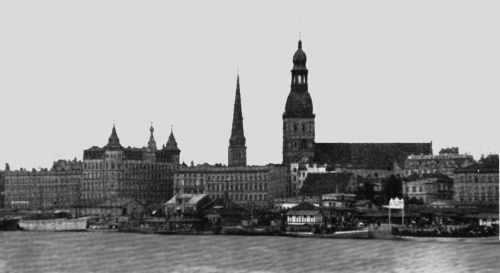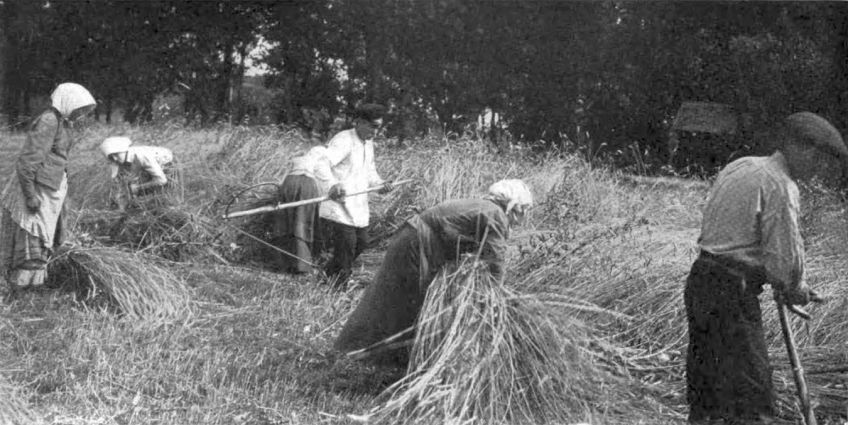LATVIA'S PLACE IN THE AGRICULTURE OF THE WORLDBy ARTHUR B. LULE, Consul General of the Republic of Latvia, New York City
THE significance of Latvian agriculture in the world economic plan lies in the fact that it supplies products for export and sale in the world market, providing the necessary means for Latvia to import goods, particularly manufactured goods, from those countries where manufacturing prevails over agriculture and forestry. Before the World War, manufacture was one of Latvia's important activities, with interior Russia as her principal market. The total destruction of this industry, during the War, left Latvia entirely agricultural for the time being. Reconstruction has tended to lessen the comparative importance of agriculture, but despite the fact that its significance has shifted, it continues to hold first place, and farming, which is bound up so closely with the character of the country, is of vital importance to its economic life.
As an exporter of flax and linseed, Latvia has obtained an important place in the world market, second only to that of Russia. In 1925, she exported flax fibre valued at 40,000,000 lats1 and linseed at 11,000,000 lats; in 1926, flax fibre valued at 38,000,000 lats and linseed at about 7,000,000 lats. The area under flax is subject to the fluctuations in flax prices on the world market, being 30,500 hectares in 1920; in 1925, 78,100 hectares; in 1926, 63,800 hectares.2
Tbe rapid development, since the War, of stock farming and dairying has exercised a marked influence on the economic life of Latvia, furnishing new articles for ex. port, viz., butter and meat, which were not previously exported. Butter exports (chiefly to Germany) are steadily increasing, as shown bv the following figures: in 1923, Latvia exported butter valued at 9,300,000 lats; in 1924, 13,500,000 lats; in 1925, 30,300,000 lats; and in 1926, 37.500.000 lats. The support accorded by the Government to dairy cooperative organizations has contributed largely to this end. The dairy cooperatives working for export at the present time number about 710. Taking into consideration the fact that hitherto only 16% of the farms have participated in cooperative dairying for export, we cannot but conclude that there are excellent possibilities for further development. Latvian butter commands a comparatively high price in the world market, being valued only slightly lower than the Danish product. Meat exports amounted to 3,600,000 lats in 1925, while in 1926 this amount was increased to 6,800,000 lats. Bacon exports, in particular, have shown a marked increase. Latvia's annual exports of the principal agricultural products average: flax, 20,000 to 25,000 tons; linseed, 20,000 tons; butter, 10,000 tons; bacon and other meats, 3,500 tons.

The Agrarian Reform, passed by the Latvian Constituent Assembly and Parliament since the establishment of an independent Latvian Republic, has divided up the large estates and created 87,000 new farms (ranging from 10 to 27 hectares each) which were given to War veterans and to landless peasants.3 At present Latvia is a land of small and medium-sized farms, those under 10 hectares comprising 62.03% of the entire area of cultivated land; from 10 to 50 hectares, 36.27%; from 50 to 100 hectares, 1.3%; and over 100 hectares, 0.4% . It is gratifying to note that the breaking up of the large estates and creation of an agricultural system based entirely on small farming units has not diminished the importance of Latvia's röle as an exporter of agricultural products.
It is true that Latvia's agriculture, from the technical standpoint, is still on a comparatively low plane, the maximum harvests per unit representing not more than 65% of the respective yields in highly cultivated countries. Since the devastation of the War, Latvia has succeeded, not before last year, however, in attaining the prewar area of cultivation. Government aid and cooperative effort have worked to relieve the situation of the Latvian farmer, but the financial resources of Latvia herself are not sufficient to permit of quick development. Large imports of artificial manure are required; long term credit for drainage, amelioration and cultivation work, is badly needed. To enable Latvia's agricultural life to fully recover from the damage sustained during the World War and to allow it to take the course of rational development. Latvia must look to foreign financial aid. As a contributing factor in the return to normalcy of world economics, the development of Latvia's agriculture, as the basic industry of the country, by means of foreign capital, is of considerable importance.
| 1 | The Latvian monetary unit is the Lat = .2903226 grammes of pure gold (gold franc); parity, 5.18 lats to the dollar. |
| 2 | One hectare=2.471 acres. |
| 3 | A scholarly article on the legal aspects of the Agrarian Reform in Latvia, prepared by Baron W. Klüchtzner, Dr. jur., a former landed proprietor in that country, together with comments by the eminent Canadian writer, Mr. M. McDougall, are in our files and may be seen by any member of the World Agriculture Society who is interested. — The Editor. |
- INTRODUCTION
- Latvia's Place in the Agriculture of the World — ARTHUR B. LULE
- Effects of the War and Reconstruction on Latvian Agriculture and its Present Economic Condition — The Latvian Economist and the Geneva Economic Conference
- Agricultural Cooperatives in Latvia — PERCY MEYER
- Soil Fertility of Latvia — LOUIS E. VAN NORMAN
- Latvian Forests and Forest Products — LESLIE A. MARSHALL
- Self-Help by Mutual Help — J. NUGENT HARRIS
 Gallery
Gallery
